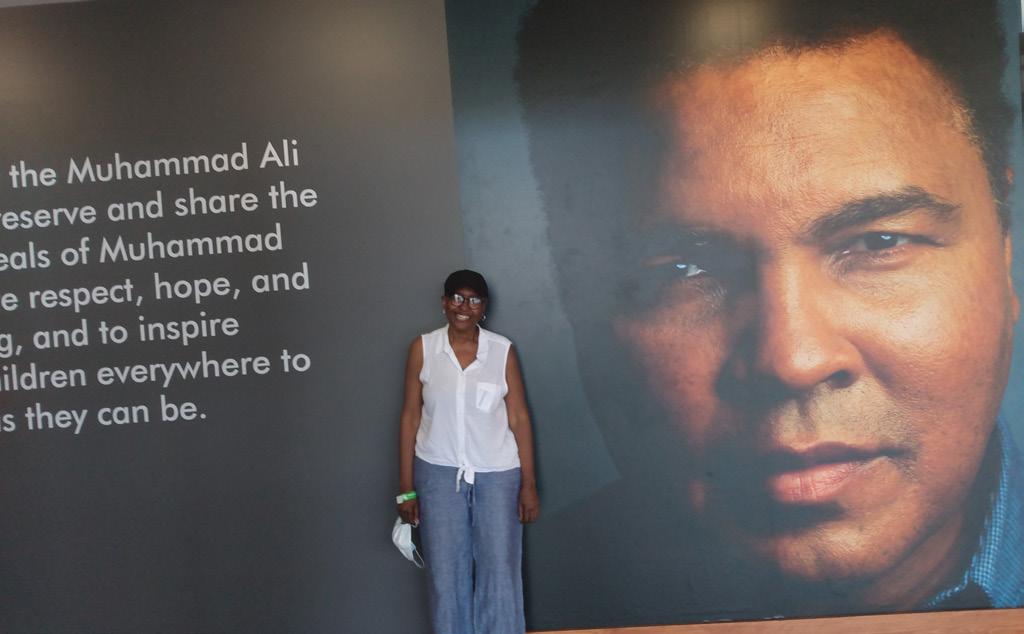
1 minute read
Crystal V. Rhodes
playwright crystal v. rhodes
Advertisement
Crystal V. Rhodes
CRYSTALRHODES.COM The pandemic changed Crystal’s plans to travel to Canada to learn about the descendants of the slaves who escaped from America. Instead, she visited Black history museums in three cities within driving distance: St. Louis, Cincinnati, and Louisville.
It was in the Griot Museum of Black History in St. Louis that I experienced the sting of slavery. The statues of historical figures were hand-carved by the museum’s female founder. Most poignant was the recreation of the belly of a slave ship. I stepped, alone, into the darkened exhibit, among the shackled men, women, and children reaching out to me from wooden planks. It was a traumatic experience I won’t forget. In Louisville, she began to realize that the museums she was visiting–the Muhammad Ali Center and Roots 101–were taking her on a progressive journey into the lives of African-Americans in the U.S., from the ravages of slavery to the contemporary Black Lives Matter movement. Nowhere was that more evident than in Roots 101. Founder Lamont Collins wanted the museum to be a healing place. Most significant was the exhibit of the items carried in marches that protested the death of Breonna Taylor. In Cincinnati, at the Harriet Beecher Stowe House, she learned that in the 1930s, the house had been converted to a Green Book hotel called the Edgemont Inn. The Green Book, published by postal worker Victor Hugo Greek, listed safe havens for Black people who were traveling during a time of segregation. I was stunned. At the time I was working on a play about traveling with the Green Book during the 1940s and here I was standing in an actual site. That moment of discovery remains one of the highlights of my trip to Cincinnati.











